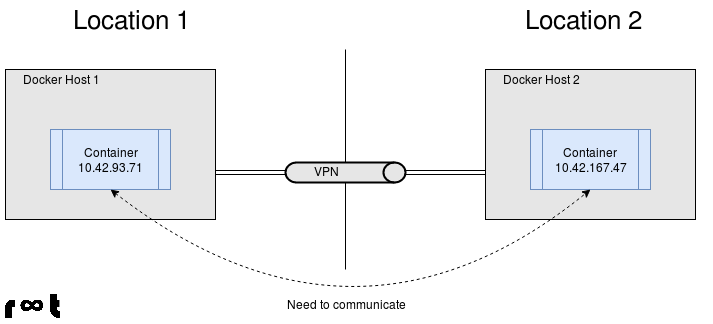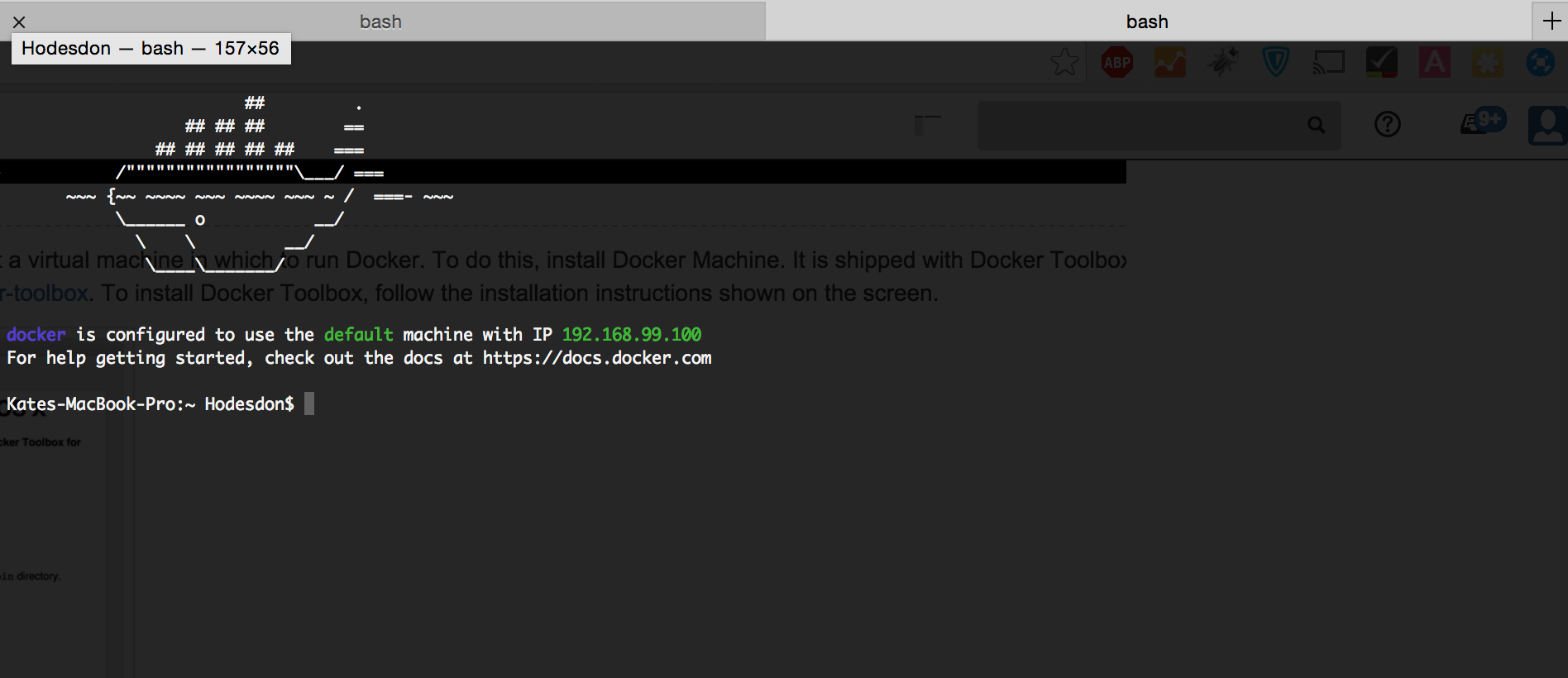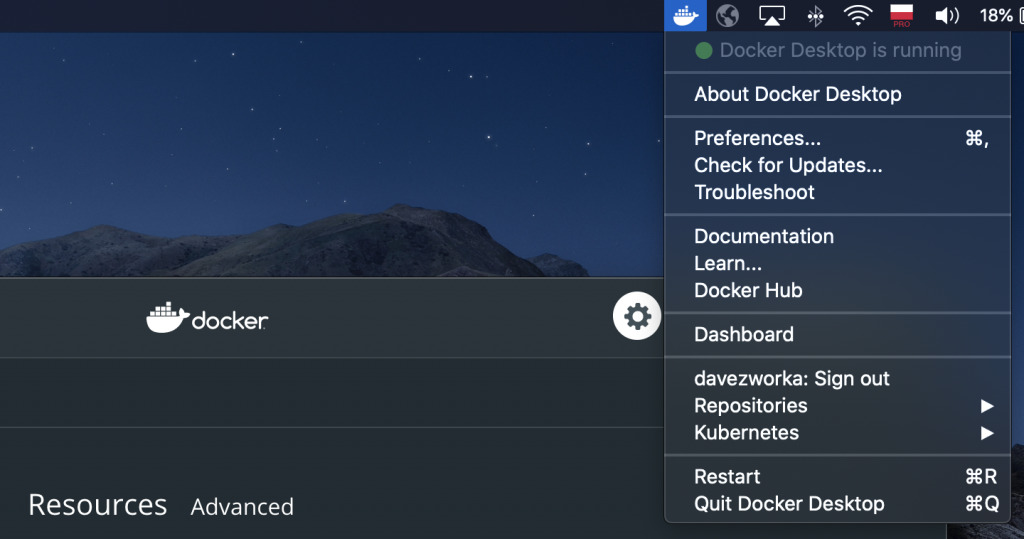
- #How to find docker ip osx how to
- #How to find docker ip osx mac os x
- #How to find docker ip osx code
- #How to find docker ip osx windows
Unfortunately, ifconfig command has been deprecated. You can use the Kudu web UI to look at the tablet information ( ), but to use the data in Spark, read the data from the KuduContext into a DataFrame.A Few years back, ifconfig was the favorite way to know IP address in Linux. Now, verify that the data has been written to Kudu. kuduContext.insertRows(gameDf, gameKuduTableName) Read the Kudu Table into a DataFrame addHashPartitions(List("release_year").asJava, 2)) Write the DataFrame to KuduĪt this point, the data is ready to be inserted using the Kudu API. export KUDU_QUICKSTART_IP=$(ifconfig \ | grep "inet " | grep -Fv 127.0.0.1 | awk ' import ._ import .CreateTableOptions kuduContext.createTable(gameKuduTableName, gameSchema, // Kudu schema with PK columns set as Not Nullable Seq("release_year", "title", "publishers"), // Primary Key Columns new CreateTableOptions(). To automate the exposure of the IP and the start, we recommend putting the commands below in a wrapper script.
#How to find docker ip osx windows
Since docker cannot run on WSL, you will need the Docker Desktop app to run the actual containers.Īfter installing and configuring docker-client for WSL as described in Appendix A: Installing Docker for Windows Subsystem for Linux (WSL), you can follow the steps described in the Kudu Quickstart tutorial. Microsoft developed WSL, a Linux-compatible kernel interface that is shared by various Linux distributions, and can be downloaded from the Windows Store. Many big data developers are comfortable in a Linux shell environment, and the Windows Subsystem for Linux (WSL) provides a lightweight layer to execute Linux binaries.
#How to find docker ip osx how to
Once you’ve verified that Java, Scala, Spark, and Docker are working, you’re ready to start! How to Launch and Destroy a Kudu Cluster Using the WSL
#How to find docker ip osx code
There is also a companion git repository with tutorials, scripts, and example code for integrating Spark and Kudu with the Kudu Quickstart.

The subsections below will give you the resources you need to get the Kudu cluster up and running. But note that the section, Set KUDU_QUICKSTART_IP, will not work properly in Windows. Prepare your environment by following the Kudu Quickstart tutorial. How to Prepare Your Environment for Running Kudu Fortunately, the developers working on Apache Kudu have made the integration to Docker fairly seamless. You need to integrate it into your environment to use it with, in the case of this blog, a Spark application. Standing up a containerized environment isn’t the end of the road. The containers are extensible and can be used multiple times. Compared to resource-intensive virtual machines, it is lightweight and start times are very quick. It is an ideal tool to spin up lightweight containers used for testing or exploring new technologies. By allowing the developer to run a Kudu cluster on their development machine, the quickstart solves the challenge of requiring all the infrastructure of Hadoop.ĭocker is a container platform used to stand up infrastructure. It can be a real hassle to do your development, deploy to a Hadoop cluster, and then test it out, only to find out you need to make changes. Kudu is typically set up on a distributed platform like Cloudera Hadoop. Why Use a Kudu Quickstart Cluster?ĭevelopers use a quickstart environment to test out their applications in a local environment - in this case, Kudu. For additional examples of developing in Kudu, visit the Kudu docs page on developing Kudu applications. Once the cluster is running, you’ll also see an example of connecting to the cluster using Apache Spark. In this blog, you will learn how to stand up a local Kudu cluster on Windows, both with the Windows Subsystem for Linux (WSL) as well as running natively on Windows with Powershell.
#How to find docker ip osx mac os x
The quickstart works very well in a Linux or Mac OS X environment, but the tutorial doesn’t yet include instructions for running a cluster on a Windows machine. The Quickstart will launch a three-node Kudu cluster on your local environment using Docker. If you want to develop applications that integrate with Apache Kudu, but would like to build your apps and run them locally on a Kudu cluster, you can use the Kudu Quickstart. At phData, we use Kudu to achieve customer success for a multitude of use cases, including OLAP workloads, streaming use cases, machine learning, and data analysis/visualization. Kudu integrates very well with Spark, Impala, and the Hadoop ecosystem.


Introduction to Apache KuduĪpache Kudu is a distributed, highly available, columnar storage manager with the ability to quickly process data workloads that include inserts, updates, upserts, and deletes. This blog post was written by Donald Sawyer and Frank Rischner.


 0 kommentar(er)
0 kommentar(er)
